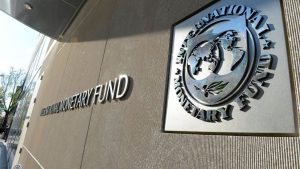THE PHILIPPINES has maintained its net creditor position and will continue to participate in the International Monetary Fund’s (IMF) lending operations until early next year, the Bangko Sentral ng Pilipinas (BSP) said.
In a statement on Wednesday, the BSP said that the Monetary Board approved the continued participation of the Philippines in the IMF’s Financial Transactions Plan (FTP).
This would allow the country to participate in the FTP from August this year to January 2025.
“This means that the country has maintained its net creditor position in the IMF which underscores the country’s sound macroeconomic fundamentals,” the BSP said.
The FTP is the mechanism through which the IMF finances its lending and repayment operations, according to the multilateral institution. The Philippines first qualified for participation in the FTP in 2010.
“The FTP is a currency exchange arrangement between the IMF and eligible members to facilitate the IMF’s lending operations with other member countries. The IMF pays interest, called remuneration, to the FTP participants like the Philippines,” the BSP said.
In order to qualify for membership, the IMF assesses a country’s balance of payments (BoP), reserve position and market stability, among other indicators.
It also considers the “adequacy of a country’s international reserve assets to ensure that the participating country will fulfill its obligations during the specified FTP period.”
“The Philippines’ strong external position supports the country’s development goals which will be beneficial to the Filipino public,” the BSP said.
The latest data from the BSP showed that the country’s BoP position swung to a $62-million surplus in July from the $53-million deficit a year ago. In the January-to-July period, the BoP position registered a $1.504-billion surplus.
At its end-July position, the BoP reflected a final gross international reserve (GIR) level of $106.7 billion, higher than $105.2 billion as of end-June.
This year, the BSP expects the country’s BoP position to end at a $1.6-billion surplus, equivalent to 0.3% of GDP.
“Given that the country’s external position remains strong, with ample gross international reserves to withstand external shocks, the country has been assessed to be eligible for continued participation in the FTP,” the central bank said.
“This puts the Philippines in a favorable position to remain as a Fund financial partner, which is an indication of the country’s commitment to contribute to the global financial safety nets and support the resolution of possible crises.”
The latest data from the BSP showed that net international reserves inched up by 0.4% to $105.62 billion as of end-July from $105.16 billion the month prior.
Net international reserves are the difference between the BSP’s reserve assets or GIR and reserve liabilities, such as short-term foreign debt and credit and loans from the IMF.
The country’s reserve position in the IMF slid by 2.8% to $719.9 million as of end-July from $740.4 million as of end-June.
Special drawing rights (SDR), or the amount the country can tap from the IMF, was unchanged at $3.75 billion.
The Philippines through the BSP, has been contributing to the IMF’s fundraising initiatives to support its quota resources.
In July last year, the central bank approved a one-year extension of the Note Purchase Agreement (NPA) with the IMF. The BSP has a maximum commitment amount of $431 million under the NPA.
The Philippine central bank has also contributed $5 million and $4 million, respectively, to the IMF’s Poverty Reduction and Growth Trust (PRGT) and Catastrophe Containment and Relief Trust (CCRT).
The PRGT is a facility that supports low-income countries while the CCRT provides grants to low-income countries struck by natural disasters.
In December 2023, the BSP and Finance department also secured special authority to increase the Philippines’ quota in the IMF. The quota was hiked to 3.1 billion in SDRs from 2 billion in SDRs.
Member countries are allocated SDRs, which is the fund’s unit of exchange backed by dollars, euros, yen, sterling and yuan, in proportion to their quota shares in the multilateral institution, according to the IMF.
Under the IMF’s New Arrangements to Borrow, the BSP also earlier said it stands ready to provide loan resources with a maximum commitment amount of 680 million in SDRs, equivalent to $912 million. — Luisa Maria Jacinta C. Jocson
